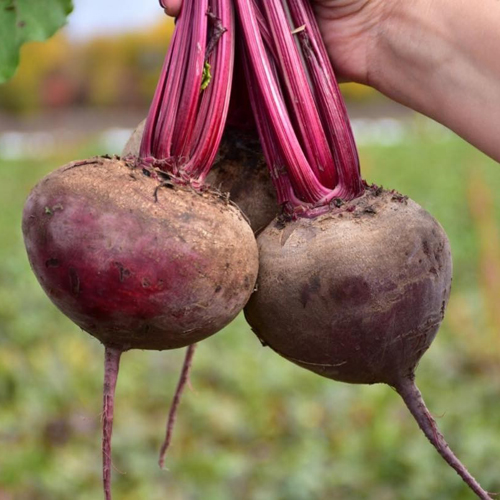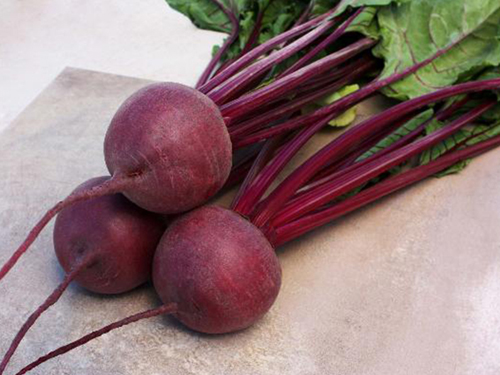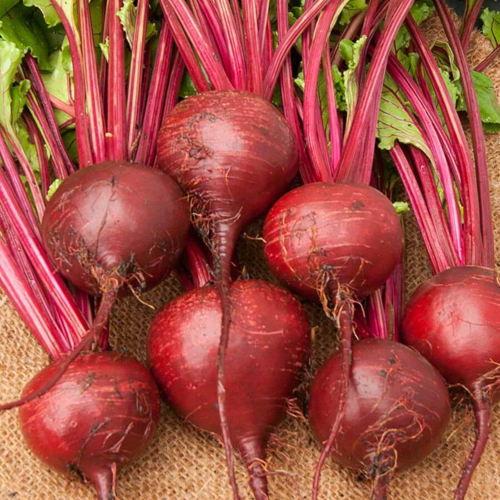Beet variety Kestrel (F1)
Just think, beets are the most common vegetable that can always be found in the kitchen of a housewife who loves to cook. But an experienced housewife will always carefully select beets for cooking, giving preference to small, rounded root crops with well-colored flesh without so-called cut rings. Kestrel belongs to such varieties. The selection belongs to the well-known Japanese company Sakata, more precisely, to its breeding base "Sakata vegetables Europe S.A.S." located in the south of France in a city called Yusho. In 2004, an application was submitted for registration of the novelty, and after variety trials, in 2007, the variety was entered into the State Register of Breeding Achievements of Russia. Regions of admission to cultivation (North-West, Central, Volgo-Vyatka, North Caucasian and Central Chernozem districts) are quite favorable for culture. The variety belongs to hybrids, therefore it is always marked with F1.

Our hero quickly gained popularity not only in Russia. He is well known in Ukraine and Moldova. In 2008, it was included in the State Register of Varieties of Belarus and allowed for cultivation in the Brest, Vitebsk, Gomel, Minsk and Mogilev regions. The hybrid is widely used in industrial plantings, since it does not require large human resources during cultivation and harvesting. The harvesting of vegetables is carried out in a mechanized way, with practically no losses. In terms of its characteristics, Kestrel is considered the best hybrid for long-term storage. In addition, it is one of the main varieties of beetroot in Europe and the United States. Abroad, the hybrid is recognized as one of the quality and yield standards. The peculiarity of the culture is that it can be used both in the early spring turnover and in the summer. It can also be grown per bundle.
Description
The leaf rosette is neat, semi-erect, sometimes erect, of medium size, the height of the tops is 30 - 33 cm. The leaf is bright green, long petiolate, oval in shape, with a shiny, slightly bubbly surface and strongly pronounced waviness along the edge. The central and lateral veins are colored. The petiole is of medium thickness, with an anthocyanin coloration on the underside. The tops remain healthy until harvesting. The rosette of leaves of the variety is quite strong, it is not injured during harvesting, but at the same time it is very easy to remove it.
The roots of this hybrid can be called attractive. They are aligned, almost rounded and smooth. Medium head corking. The axial root is thin, of medium length. The variety has a juicy pulp, evenly colored in a dark red-raspberry color, with a dense but delicate texture. A great advantage of the pulp is the absence or very weakly expressed annularity. The State Register defines taste as good and excellent. Indeed, the taste of the variety is very sweet, because 100 grams of raw pulp contains 10 - 12% sugar (or 5.7 - 10.0% according to the State Register), 13.0 - 17.4% dry matter. In addition, it is worth recalling that beets are the record holder for the content of minerals: iodine, magnesium, calcium, cobalt, zinc, iron, phosphorus and potassium. The size of the root crop is convenient for use in cooking, the average weight of a vegetable is 203 - 375 grams, of course, larger specimens grow, weighing 400 grams or more.

Characteristics
- In terms of ripening, Kestrel belongs to mid-season varieties. Harvesting is carried out 100 - 120 days after the emergence of seedlings during spring sowing. With summer sowing, the growing season is shorter and is 55 - 60 days. The same short interval of 55 - 60 days is needed for early spring planting for the production of bunched beets;
- productivity is excellent. According to the State Register, the marketable yield is 253 - 308 c / ha, which is at the level taken as the standard Bordeaux 237... The maximum indicator was achieved in the Rostov region.There the yield was 336 c / ha. Ukrainian agrarians in the Nikolaev region harvest about 90 tons of this vegetable from one hectare. From a square meter of an ordinary garden bed, you can get up to 3.0 kg;
- the yield of marketable products even with mechanical harvesting is quite high and amounts to 84 - 96%;
- the culture shows high resistance to stressful situations, perfectly tolerates spring cold snaps. Dry periods also do not cause significant damage to crops;
- root crops are resistant to cracking;
- one of the advantages of the hybrid is its high immunity. Originators indicate intermediate resistance to Rhizoctonia (red rot), powdery mildew and downy mildew. Vegetable growers confirm the high resistance of the culture to cercosporosis. There is no data on the stability of Kestrel in the State Register;
- the variety has practically no ringiness. True, with sudden changes in temperature or high humidity during the growing season, rings may appear, but the degree of their manifestation will be insignificant;
- the transportability of beets is high, the harvest tolerates long-term transportation without losses, root crops are resistant to mechanical damage;
- the keeping quality is excellent, the vegetable is intended for long-term storage, during which it is able to preserve not only its appearance, but also its taste;

- the way this wonderful hybrid is used is very wide. Due to the fact that the color saturation is not lost during heat treatment, the vegetable is widely used not only in home cooking, but is also perfect for making baby food. A juicy root vegetable is suitable for processing into juice, freezing, canning, pickling.
During the growing season, the root crop is almost half shown above the soil surface. This makes it available for manual cleaning. Using a pitchfork can greatly facilitate the cleaning process.
Agrotechnics
You can sow beet seeds in early spring - at the end of April or in the second half of May, depending on the climatic characteristics of the region. The main condition is for the soil to warm up to + 7 ° C. The beds for Kestrel should be planned in well-lit areas, preferably white cabbage or cauliflower, potatoes, cucumbers, and onions. In order for ideal root crops to form, the soil must be prepared - dig up on a shovel bayonet, while applying mineral fertilizers. The variety is very fond of potash fertilizing and the introduction of ash. During the growing season, you need to fertilize the planting 2 - 3 times. Despite the good resistance to drought, the plant should be watered in the heat at least 5 - 6 times per season. But there is no need to overmoisten the soil, so if the weather is replete with natural precipitation, then the amount of irrigation is reduced. Cleanliness in the garden is another prerequisite. Loosening after watering and weeding will have a positive effect on the yield.
An important condition for the normal development of the root crop is the availability of sufficient free space in the garden bed. Therefore, after the appearance of full shoots, thinning is carried out. An interesting feature of this beet is the possibility of using young plants, which were removed during thinning, for transplanting to a separate bed. Such seedlings take root very well, and thus additional harvest can be obtained.
Kestrel can be safely called the dream of any gardener. Productivity is increased due to the ability to use plants obtained during transplantation (this is, of course, not about industrial cultivation). Root crops have excellent commercial qualities, leveled, beautiful shape, resistance to mechanical damage. The pulp is evenly colored, without ringiness, sweet and juicy, capable of retaining color during processing. Disease resistance makes maintenance easier than ever.The predisposition to long-term storage makes the culture very promising for industrial use. There are practically no downsides to beets. But if you carefully read the reviews, you can still find a drawback - the variety is adored by pests.








